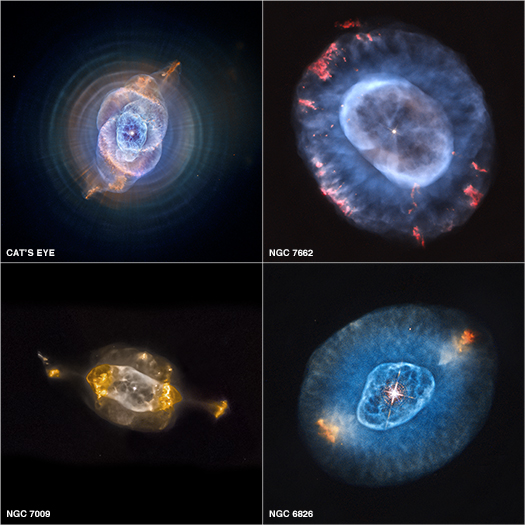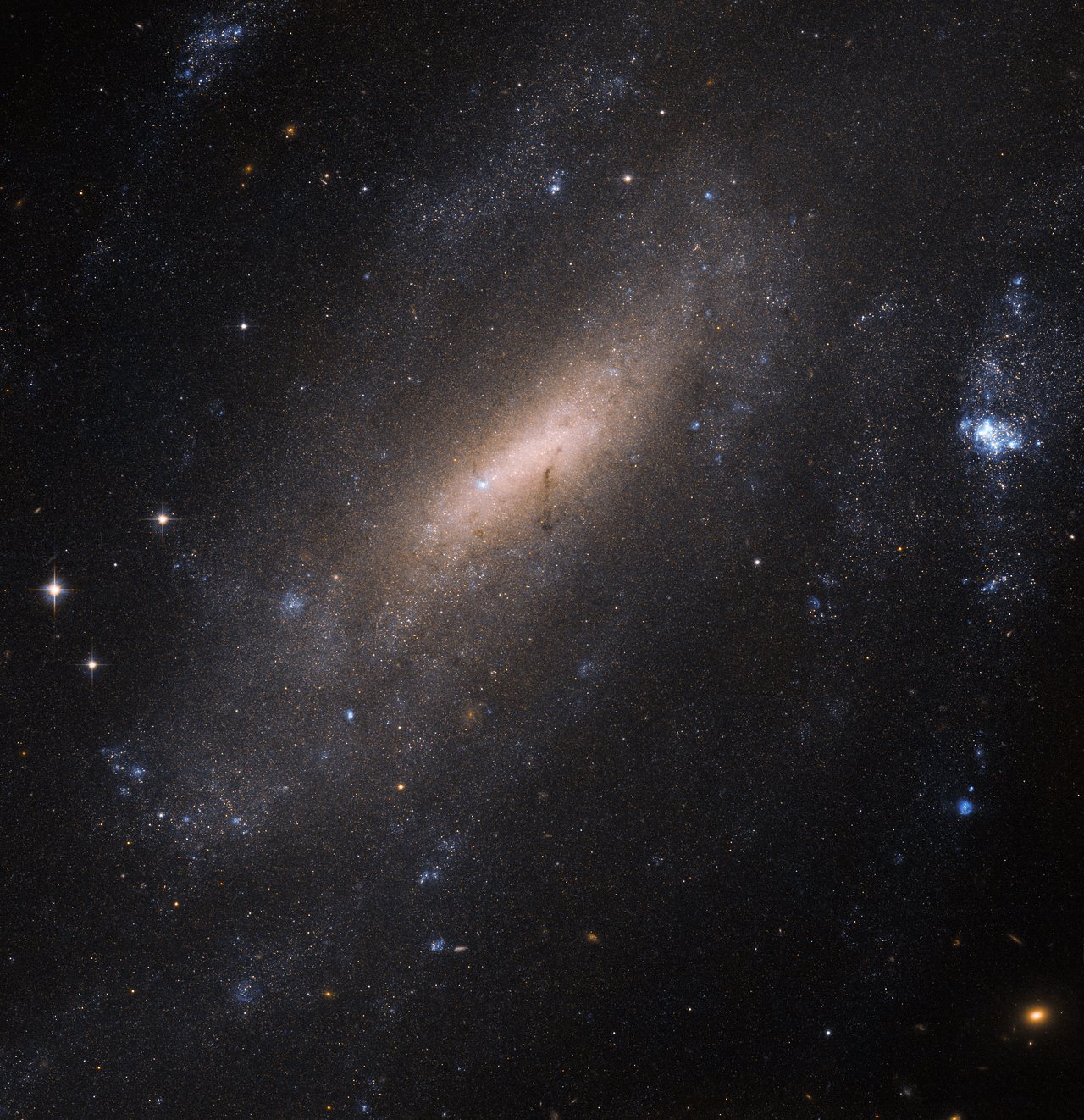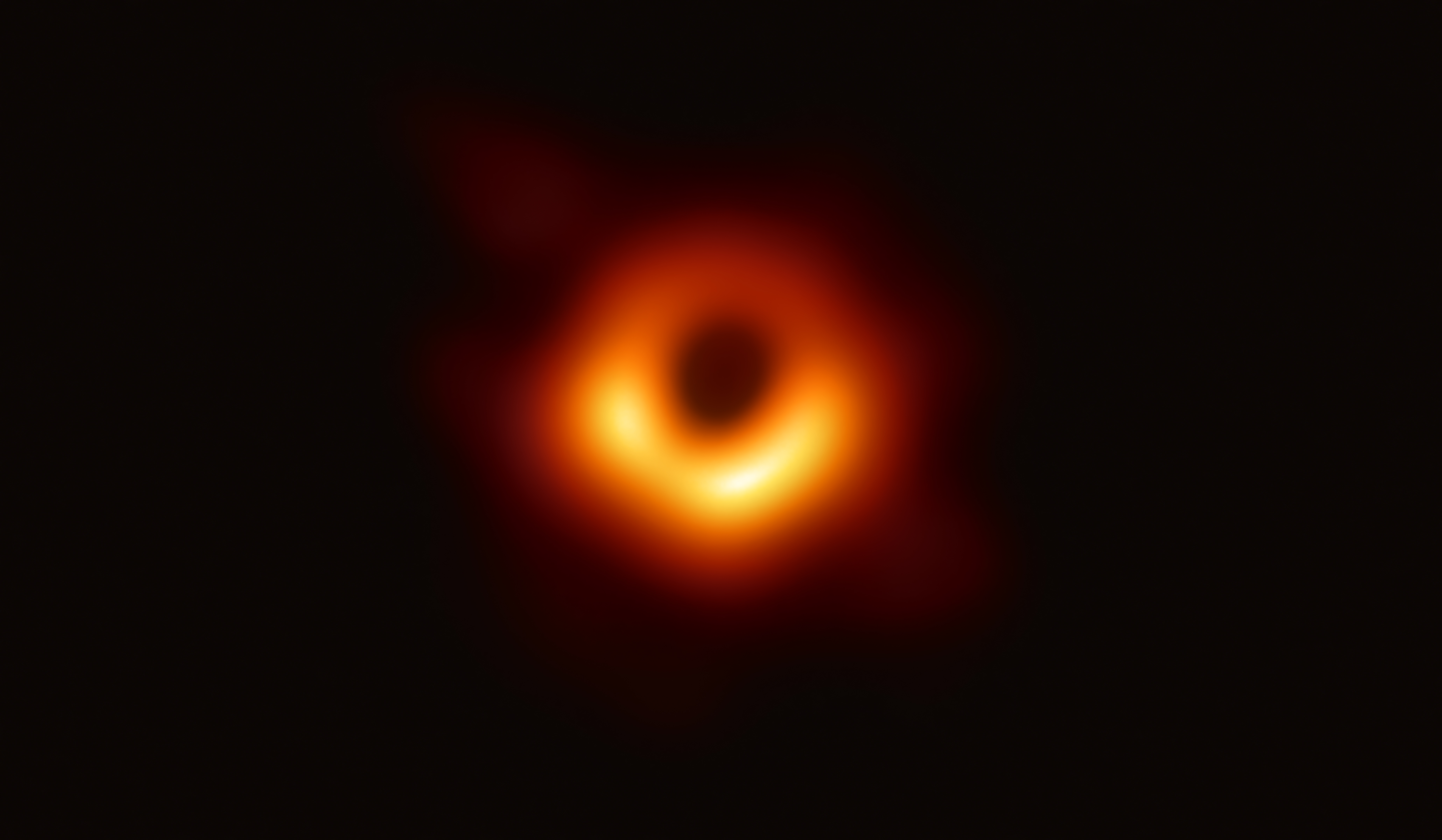|
NGC 3726
NGC 3726 is a spiral galaxy located in the constellation Ursa Major. It is located at a distance of circa 45 million light years from Earth, which, given its apparent dimensions, means that NGC 3726 is about 85,000 light years across. It was discovered by William Herschel on February 5, 1788. Structure NGC 3726 is a spiral galaxy with a small bar, seen with medium inclination. The bar is 1.38 arcseconds across and it ends at an inner ring with 1.50 arcseconds diameter. The bluest regions of star formation are located at the ring. Three arms emanate from the ring. The southern is the brightest and the north is the best defined. The third arm emanates from the east side of the ring, moves towards NNW and then bends sharply to the southwest. The spiral arms are thick and well defined and can be traced for half a revolution. The arms then branch into fragments. The spiral pattern of the galaxy is a bit disturbed and asymmetrical. Numerous bright HII regions are present in the galaxy ... [...More Info...] [...Related Items...] OR: [Wikipedia] [Google] [Baidu] |
New General Catalogue
The ''New General Catalogue of Nebulae and Clusters of Stars'' (abbreviated NGC) is an astronomical catalog, astronomical catalogue of deep-sky objects compiled by John Louis Emil Dreyer in 1888. The NGC contains 7,840 objects, including galaxy, galaxies, star clusters and emission nebulae. Dreyer published two supplements to the NGC in 1895 and 1908, known as the ''Index Catalogues'' (abbreviated IC), describing a further 5,386 astronomical objects. Thousands of these objects are best known by their NGC or IC numbers, which remain in widespread use. The NGC expanded and consolidated the cataloguing work of William Herschel, William and Caroline Herschel, and John Herschel's ''General Catalogue of Nebulae and Clusters of Stars''. Objects south of the Celestial sphere, celestial equator are catalogued somewhat less thoroughly, but many were included based on observation by John Herschel or James Dunlop. The NGC contained multiple errors, but attempts to eliminate them were made by ... [...More Info...] [...Related Items...] OR: [Wikipedia] [Google] [Baidu] |
Barred Spiral Galaxy
A barred spiral galaxy is a spiral galaxy with a central bar-shaped structure composed of stars. Bars are found in about two thirds of all spiral galaxies, and generally affect both the motions of stars and interstellar gas within spiral galaxies and can affect spiral arms as well. The Milky Way Galaxy, where the Solar System is located, is classified as a barred spiral galaxy. Edwin Hubble classified spiral galaxies of this type as "SB" (spiral, barred) in his Hubble sequence and arranged them into sub-categories based on how open the arms of the spiral are. SBa types feature tightly bound arms, while SBc types are at the other extreme and have loosely bound arms. SBb-type galaxies lie in between the two. SB0 is a barred lenticular galaxy. A new type, SBm, was subsequently created to describe somewhat irregular barred spirals, such as the Magellanic Clouds, which were once classified as irregular galaxies, but have since been found to contain barred spiral structures. Among o ... [...More Info...] [...Related Items...] OR: [Wikipedia] [Google] [Baidu] |
NGC 3928
NGC 3928 is a lenticular galaxy in the constellation Ursa Major. It was discovered by William Herschel Frederick William Herschel (; german: Friedrich Wilhelm Herschel; 15 November 1738 – 25 August 1822) was a German-born British astronomer and composer. He frequently collaborated with his younger sister and fellow astronomer Carolin ... on March 9, 1788. Gallery File:NGC3928 - SDSS DR14.jpg, NGC 3928 (SDSS DR14) References External links Ursa Major (constellation) Lenticular galaxies 3928 037136 {{lenticular-galaxy-stub ... [...More Info...] [...Related Items...] OR: [Wikipedia] [Google] [Baidu] |
NGC 3906
NGC commonly refers to: * New General Catalogue of Nebulae and Clusters of Stars, a catalogue of deep sky objects in astronomy NGC may also refer to: Companies * NGC Corporation, name of US electric company Dynegy, Inc. from 1995 to 1998 * National Gas Company of Trinidad and Tobago, state-owned natural gas company in Trinidad and Tobago * National Grid plc, a former name of National Grid Electricity Transmission plc, the operator of the British electricity transmission system * Northrop Grumman Corporation, aerospace and defense conglomerate formed from the merger of Northrop Corporation and Grumman Corporation in 1994 * Numismatic Guaranty Corporation, coin certification company in the United States Other uses * National Gallery of Canada, art gallery founded in 1880 in Ottawa, Canada * National Geographic, documentary and reality television channel established in the United States in 2001 formerly called National Geographic Channel * Native Girls Code, US non-profit orga ... [...More Info...] [...Related Items...] OR: [Wikipedia] [Google] [Baidu] |
NGC 3893
NGC 3893 is a spiral galaxy located in the constellation Ursa Major. It is located at a distance of circa 50 million light years from Earth, which, given its apparent dimensions, means that NGC 3893 is about 70,000 light years across. It was discovered by William Herschel on February 9, 1788. NGC 3893 interacts with its satellite, NGC 3896. Characteristics NGC 3893 is a grand design spiral galaxy. It has two main arms, with high surface brightness and numerous HII regions.Sandage, A., Bedke, J. (1994), ''The Carnegie Atlas of Galaxies. Volume I'', Carnegie Institution of Washington A faint spiral arm extends from the south to the north side making an arc on the east side of NGC 3893. The galaxy is categorised as SAB in NED, but Hernández-Toledo and Puerari did not detect a bar in their observations. The stellar disk of NGC 3893 is estimated to have a mass of 2.3x1010 and dominates gas dynamics in the optical radius. The star formation rate in NGC 3893 is about 5.62 /year. Al ... [...More Info...] [...Related Items...] OR: [Wikipedia] [Google] [Baidu] |
Virgo Supercluster
The Virgo Supercluster (Virgo SC) or the Local Supercluster (LSC or LS) is a mass concentration of galaxies containing the Virgo Cluster and Local Group, which itself contains the Milky Way and Andromeda galaxies, as well as others. At least 100 galaxy groups and clusters are located within its diameter of 33 megaparsecs (110 million light-years). The Virgo SC is one of about 10 million superclusters in the observable universe and is in the Pisces–Cetus Supercluster Complex, a galaxy filament. A 2014 study indicates that the Virgo Supercluster is only a lobe of an even greater supercluster, Laniakea, a larger, competing referent of the term Local Supercluster centered on the Great Attractor. Background Beginning with the first large sample of nebulae published by William and John Herschel in 1863, it was known that there is a marked excess of nebular fields in the constellation Virgo (near the north galactic pole). In the 1950s, French–American astronomer Gér ... [...More Info...] [...Related Items...] OR: [Wikipedia] [Google] [Baidu] |
Ursa Major Cluster
The Ursa Major Cluster (Ursa Major I Cluster, UMa I ClG) is a spiral-rich galaxy cluster of the Virgo Supercluster. Some of its largest members are NGC 3631, NGC 3953, M109 on North ( M109 Group) and NGC 3726, NGC 3938, NGC 4051 on South. The Ursa Major cluster is located at a distance of 18.6 mega parsecs (60 million light-year A light-year, alternatively spelled light year, is a large unit of length used to express astronomical distances and is equivalent to about 9.46 trillion kilometers (), or 5.88 trillion miles ().One trillion here is taken to be 1012 ...s) and contains about 30% of the light emitted but only 5% of the mass of the nearby Virgo Cluster. External links * Galaxy clusters Virgo Supercluster Ursa Major (constellation) {{galaxy-cluster-stub ... [...More Info...] [...Related Items...] OR: [Wikipedia] [Google] [Baidu] |
NGC 3877
NGC 3877 is a type Sc spiral galaxy that was discovered by William Herschel on February 5, 1788. It is located below the magnitude 3.7 star Chi Ursae Majoris in Ursa Major. Supernova The Type IIn supernova SN 1998S is the only supernova that has been observed within NGC 3877. Environment NGC 3877 is a member of the M109 Group, a group of galaxies located in the constellation Ursa Major that may contain over 50 galaxies. The brightest galaxy in the group is the spiral galaxy M109 The M109 is an American 155 mm turreted Self-propelled artillery, self-propelled howitzer, first introduced in the early 1960s to replace the M44 self propelled howitzer, M44. It has been upgraded a number of times, most recently to the M109A7. T .... References External links * Spiral galaxies M109 Group Ursa Major 3877 06745 036699 17880205 {{Spiral-galaxy-stub ... [...More Info...] [...Related Items...] OR: [Wikipedia] [Google] [Baidu] |
K Band (infrared)
In infrared astronomy, the K band is an atmospheric transmission window centered on 2.2 μm The micrometre ( international spelling as used by the International Bureau of Weights and Measures; SI symbol: μm) or micrometer (American spelling), also commonly known as a micron, is a unit of length in the International System of Unit ... (in the near-infrared 136 THz range). HgCdTe-based detectors are typically preferred for observing in this band. See also * Absolute magnitude * UBV photometric system References Electromagnetic spectrum Infrared imaging {{physics-stub ... [...More Info...] [...Related Items...] OR: [Wikipedia] [Google] [Baidu] |
Supermassive Black Hole
A supermassive black hole (SMBH or sometimes SBH) is the largest type of black hole, with its mass being on the order of hundreds of thousands, or millions to billions of times the mass of the Sun (). Black holes are a class of astronomical objects that have undergone gravitational collapse, leaving behind spheroidal regions of space from which nothing can escape, not even light. Observational evidence indicates that almost every large galaxy has a supermassive black hole at its center. For example, the Milky Way has a supermassive black hole in its Galactic Center, corresponding to the radio source Sagittarius A*. Accretion of interstellar gas onto supermassive black holes is the process responsible for powering active galactic nuclei (AGNs) and quasars. Two supermassive black holes have been directly imaged by the Event Horizon Telescope: the black hole in the giant elliptical galaxy Messier 87 and the black hole at the Milky Way’s center. Description Supermassive black ... [...More Info...] [...Related Items...] OR: [Wikipedia] [Google] [Baidu] |
Galaxy Halo
A galactic halo is an extended, roughly spherical component of a galaxy which extends beyond the main, visible component. Several distinct components of galaxies comprise the halo: * the stellar halo * the galactic corona (hot gas, i.e. a plasma) * the dark matter halo The distinction between the halo and the main body of the galaxy is clearest in spiral galaxies, where the spherical shape of the halo contrasts with the flat disc. In an elliptical galaxy, there is no sharp transition between the other components of the galaxy and the halo. A halo can be studied by observing its effect on the passage of light from distant bright objects like quasars that are in line of sight beyond the galaxy in question. Components of the galactic halo Stellar halo The stellar halo is a nearly spherical population of field stars and globular clusters. It surrounds most disk galaxies as well as some elliptical galaxies of type cD. A low amount (about one percent) of a galaxy's stellar mass ... [...More Info...] [...Related Items...] OR: [Wikipedia] [Google] [Baidu] |



